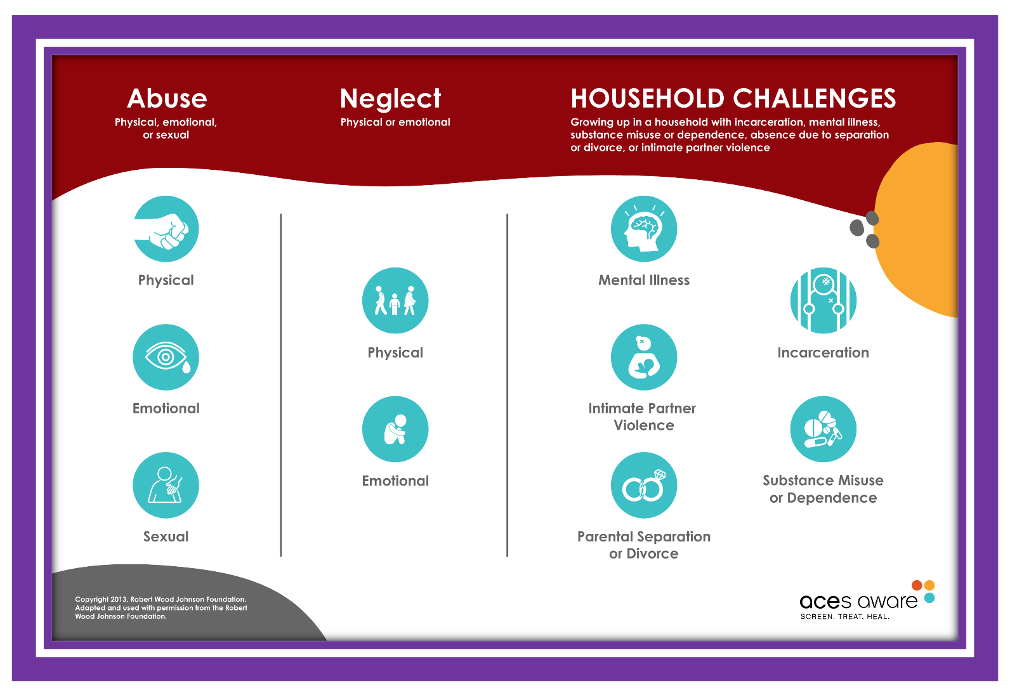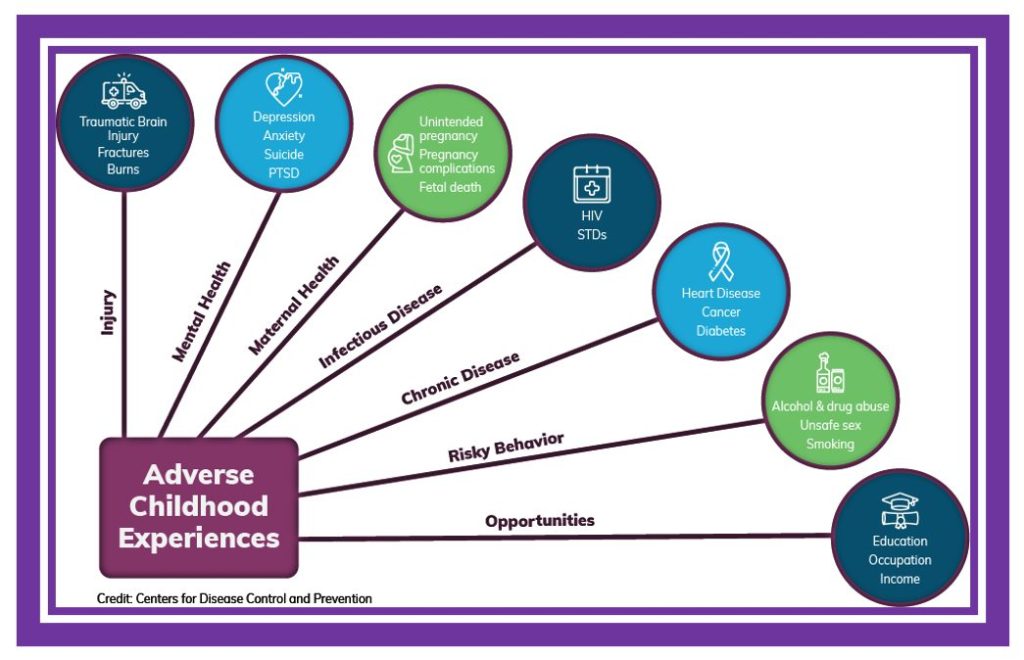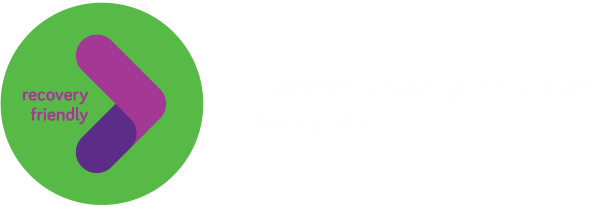When we take our first breath, our eyes open to our new world. Our family could be big or only a mighty number of one. Our skin may be any combination of honey, amber, cocoa bean, bronze, and ivory. Our home may be a cabin in the mountain winds of Colorado or an apartment in the concrete jungle of New York City. Never-the-less, we grow where we are planted; unaware that both the environment around us and the genetics within are forming a person who has both individual strengths and vulnerabilities.

ACEs and Toxic Stress:
While an idyllic childhood is made up of love, laughter, and support, most of us have experienced some type of loss, neglect or confusion growing up. Experiences rooted in trauma can sometimes lead to mental and physical diseases, including Substance Use Disorder (SUD) (CDC, 2021). Fortunately, a tool called ACEs (Adverse Childhood Experiences) has been created to address childhood trauma.
There are ten categories of ACEs and below is an image describing those categories.

ACEs has helped simplify the complex histories of childhood into measurable values. Although most people have at least one ACE, research is showing, the more ACEs one has experienced, the more likely that person may experience certain diseases in their lifetime (CDC, 2021).
The image below illustrates how ACEs can contribute to a person’s life in a harmful way

In addition to ACEs, people can also experience Toxic Stress, which is long term stress that accumulates over time without adequate support from a caregiver (ACEs Aware, 2022). Toxic Stress can be caused by poverty, discrimination, and food insecurity. Both ACEs and Toxic Stress can cause disruptions in the brain development of a child (ACEs Aware, 2022). This attests to the importance of screening so we can help prevent and treat diseases like SUD for those affected (ACEs Aware, 2022). The link below is an example of a short screening tool used to address ACEs (Part 1) and Toxic Stress (Part II) in teenagers.
Pediatric ACEs and Related Life Events Screener (PEARLS) (acesaware.org)
Early Use:
As a teenager, your ability to plan, make good decisions, and think rationally as opposed to impulsively were not fine-tuned (NIDA, 2020b). This is because the brain is not done developing until around age 25 (Shatterproof, 2022a). It makes sense, that if a child begins using drugs or alcohol during the teenage years, especially around 13 or 14, the development of these tools can be hindered and the risk for SUD substantially increases and continues into adulthood (Shatterproof, 2022a).
Genetics:
Genetics can be responsible for up to 50% of a person’s risk for SUD (NIDA, 2019). Geneticists have found over 400 locations on the genome that may influence certain SUDs, and the future hope is to find certain clusters that influence (NIDA, 2019). So, it is no longer the “nature” vs. “nurture” debate; it is “nature and nurture” that influences SUD.
References:
ACEs Aware. (2022). The Science of ACEs and Toxic Stress. Retrieved from
The Science of ACEs & Toxic Stress | ACEs Aware – Take action. Save lives.
Centers of Disease Control and Prevention – CDC. (2021, April 6). Preventing Adverse Childhood Experiences. Retrieved from
Preventing Adverse Childhood Experiences |Violence Prevention|Injury Center|CDC
National Institutes on Drug Abuse – NIDA. (2020a, July). Drugs and the Brain. Retrieved from
https://nida.nih.gov/publications/drugs-brains-behavior-science-addiction/drugs-brain
National Institutes on Drug Abuse – NIDA. (2020b, July). Preventing Drug Misuse and Addiction: The Best Strategy. Retrieved from
National Institutes on Drug Abuse – NIDA. (2019, August). Genetics and Epigenetics of Addiction
DrugFacts. Retrieved from Genetics and Epigenetics of Addiction DrugFacts | National Institute on Drug Abuse (NIDA) (nih.gov)
Recovery Research Institute – RRI. (n.d.). The Brain in Recovery: The neuroscience of addiction recovery.
Retrieved from The Brain in Recovery – Recovery Research Institute (recoveryanswers.org)
Sharp, A., Lautieri, A., Thomas, S. (2022, February 25). Drug Withdrawal Symptoms, Timelines and Treatment. American Addiction Centers.
Retrieved from Drug Withdrawal Symptoms, Timelines, and Treatment (americanaddictioncenters.org)
Shatterproof. (2022a). Just Five: Are You at Risk. Retrieved from
Are You at Risk? – Recovery Friendly Missouri (justfive.org)
Shatterproof. (2022b). Just Five: The Science of Addiction. Retrieved from
The Science of Addiction – Recovery Friendly Missouri (justfive.org)

